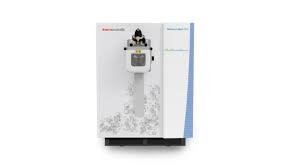Wednesday, 12 November 2025
Engineering better food safety
by Steve Burgess, General Manager – Europe & Africa June 7 marks World Food Safety Day, a moment of reflection and responsibility for every organisation involved in putting food on…

by Steve Burgess, General Manager – Europe & Africa
June 7 marks World Food Safety Day, a moment of reflection and responsibility for every organisation involved in putting food on tables across the globe. This year’s theme, “Food safety: science in action,” offers a timely reminder that safety isn’t a matter of final checks or regulatory box-ticking. It is a continuous, science-led process. For manufacturers, it begins long before any product reaches the end of the production line.
Variability is the most persistent threat in food production. Across high-speed, high-volume lines, even minor deviations in cooking temperature, dwell time, seasoning load or packaging sealing pressure can have serious implications for safety and quality. For example, the U.S. Department of Agriculture and the Food and Drug Administration (FDA) posted notices of multiple food recalls in early 2025 due to the discovery of “foreign objects” such as metal, rubber, and plastic in various food products, including chicken nuggets, frozen meals, sausages, and shredded cheese. These contaminants often stem from faulty manufacturing equipment or human error, with staffing shortages and inadequate maintenance cited as potential contributors.
Scientific precision enables manufacturers to deliver the much-needed consistency at scale, ensuring that foods are reliably safe. This begins with control. Automated systems are now capable of monitoring key parameters in real time, adjusting variables mid-process to ensure uniformity from batch to batch.
Gravimetric seasoning and oil spraying solutions, for example, allow for exact application levels aligned with nutritional targets — crucial for regulatory compliance, particularly in regions managing HFSS (high fat, salt, sugar) restrictions. Digital tools built into frying systems maintain optimal temperatures, reducing acrylamide formation in consumer-loved snacks while preserving product integrity.
Where human oversight alone once carried the weight of food safety, today’s systems use technology to reduce that burden. Automated rejection mechanisms isolate contaminated or non-compliant products without disrupting production. Modern metal detection systems operate at sub-millimetre sensitivity, working continuously and invisibly. Each intervention is informed by data, not guesswork. This is science in action.
However, as the early 2025 recalls demonstrate, these systems are not foolproof. Not all systems are built equal, so food processing companies must work with reputable OEMs with a demonstrable track record of safe performance. In an ideal world, a complete line solution partner would have full accountability, with clear visibility into production goals and the responsibility to ensure they are met, while also balancing food safety and regulatory requirements.
Safety through maintenance
Food safety is, of course, not something that is considered only at the equipment selection stage. It is also built into the physical architecture of the production line. Equipment designed with cleanability and modularity in mind helps ensure hygiene standards are met and maintained consistently.
Smooth and sloped surfaces, tool-less access, and hygienic welds minimise the potential for microbial build-up or allergen cross-contact. This becomes especially important in facilities running multiple SKUs or serving allergy-sensitive markets, where the ability to execute efficient, verifiable changeovers is a critical determinant of safety.
The principles outlined by groups such as the European Hygienic Engineering & Design Group (EHEDG) and implemented by manufacturing partners across the industry make clear that hygienic design is not a bolt-on consideration — it’s a fundamental element of food-safe engineering. Paired with effective site practices, these design decisions contribute to a safety culture grounded in reliability, not reaction.
The science of food safety is something that is baked into food production lines from the outset. As the demands on food systems intensify, the science becomes all the more important. World Food Safety Day is a chance to acknowledge the often-unseen decisions, designs, and data that protect every product. The future of safe food doesn’t rest on luck or vigilance alone. It rests on systems built to perform in harmony with all the elements of the complete line and exactly as intended.
Technology
MENU ORDER AI to launch app aimed at GLP-1 users and health-conscious diners
Nov 10, 2025 | Company News
Harnessing Quantum AI for Greener Minds and Healthier Futures
Nov 10, 2025 | Interaction
Intertek acquires Costa Rican testing business Suplilab
Nov 07, 2025 | Company News
Food Testing
Intertek acquires Costa Rican testing business Suplilab
Nov 07, 2025 | Company News
Thermo Fisher Scientific launches Orbitrap mass detector for food safety testing
Oct 24, 2025 | Company News
ADM advances quality capabilities with opening of new Central Milling Laboratory
Oct 16, 2025 | Company News
More Popular
HEINEKEN opens new brewery in Brazil
Nov 12, 2025 | Beverages
Remilk and Gad Dairies introduce The New Milk in Israel
Nov 12, 2025 | Beverages
Ochre Spirits closes seed round led by Ah! Ventures to build next-gen beverage house
Nov 12, 2025 | Beverages





